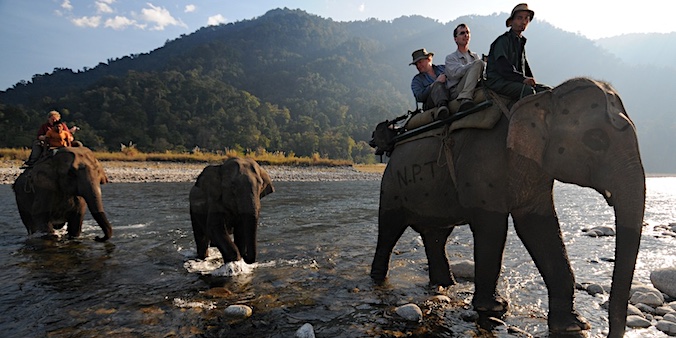Walking the far East
Tour - 22 days/ 8 days trekking
About ASSAM & Arunachal Pradesh
Assam is the only state in north-east India that is almost entirely low lying. It consists largely of the flood plains of the Brahmaputra, one of the largest untamed rivers in the world. The climate is ideal for rice cultivation, all kinds of tropical crops, bamboo cultivation and fish farming.
Assam is relatively densely populated. The legal part of the population consists of at least 35 million people on an area of 78,000 square kilometers (similar to Czechia, a bit smaller than Austria), the illegal part at least 5 million.
Read more…Read lessThe name Assam comes from the same origin as Siam, which means Thailand. The larger part of the population finds its roots far to the east, from where their ancestors, the Ahums, entered the area in the 13th century. For more than 600 years, the Ahums upheld a kingdom in Assam. However,especially in the last two centuries, the Assamese culture, language and genetics have changed due to immigration from India, Nepal and later Bangladesh.
Before the Ahums settled in the Brahmaputra Plain, other peoples already lived here. The most important of these are the Bodos, who now live mainly in the north and northwest of Assam (population about 1.5 million).
Arunachal Pradesh is by far the most mountainous and most forested state of Northeast India. It is sandwiched between Bhutan in the west and Myanmar in the east and shares its entire northern border with Tibet/China. This border is formed by the highest glacier-covered peaks of the eastern Himalayas, a very difficult area to reach.
At lower altitudes, between 1000 and 3000m, the state is endowed with dense temperate forest and the most extensive subtropical jungle of India. Here, the majority of Arunachal’s diverse population lives, divided over many different ethnic groups.
Read more…Read less
There are at least 26 different tribes, depending on who is counting. Each of these tribes has its own language, culture, form of agriculture, religion, costumes and customs. Most of them are originally hunter-gatherers who live off what the forest yields. Donyi-Polo, the Sun-Moon god, is more popular here than Shiva, Mohammed, Jesus or Buddha. The exact origin of these tribes is largely unknown, but customs, language and looks point to East Asia and border areas of Tibet.
BUDDHIST ENCLAVESArunachal also has pockets of Buddhism. In the far east of the states, there are some villages where one could imagine being in Myanmar or Thailand, as the same Hinayana (Theravada) form of Buddhism is followed here. Mahayana (‘Tibetan’) Buddhism is followed by the Memba of Mechuka (north of Along) and is especially predominant in the northwestern corner of the state, where Arunachal borders both Tibet/China and Bhutan. Here, the Sherdukphen and Monpa live. Their language and culture are very reminiscent of their neighbours across the border. Tawang, the main town in this area, is said to have the largest ‘Tibetan’ Buddhist monastery outside Tibet.
To reach this area, involves 2.5 days of driving from Guwahati, whereby one crosses the 4170m high Sela Pass. The latter is done on the tour described here.
Region
Assam & Arunachal Pradesh
(India)
Best Time
Feb-April &
Oct-Dec
No. Of Days
24 days, 8 days trekking
Trip Character
Jeep tour with treks & walks
Sleeping Altitude
65 - 1630 m
Trek Character
Camping trek
Level: 2
Price
INR XXX/ $ XXX
ABOUT THIS TOUR
On this tour we take you to India’s easternmost parts, making a round trip through the upper reaches of the Brahmaputra. We start off at Dibrugarh, India’s easternmost city situated amidst lush green tea estates. Then we cross the Brahmaputra, one of the world’s last big untamed rivers, to Majuli Island. There, we’ll walk and bicycle through traditional villages of the Mishmi tribe and witness a unique esoteric dance form performed by a community of Vaishnavite (Hindu) monks.
Traveling north into the forest-covered mountains of Arunachal Pradesh, we’ll see the different cultures of the Adi Gallong and Mishmi. These people live in large bamboo houses on stilts and are still largely self-sufficient. The small hamlets surrounded by fields and forest are quite an idyllic sight, exuding an atmosphere of nature-based prosperity.
Read more…Read less…
Not far from the Tibetan border we’ll see the Buddhist culture of the ‘Tibetan’ Memba, as we walk to some of their remote villages. Coming down from the mountains again, we skirt the Brahmaputra flood plain to the southwest. Near Roing, where the Idu Mismhi live, we’ll do a two-day trek to pristine Mehao Lake, set among subtropical jungles in a protected reserve.
Traveling further south again and crossing some of the Brahmaputra’s larger tributaries, we reach Namdapha National. Park. Here, close to the Burmese border, we do a 4-day trek though this magnificent park. Namdapha is one of the most biodiverse parks in Asia. It covers all altitude stages from 200 to 4700 m, has an extremely rich birdlife and a healthy population of tigers. It is the only park in the world where tiger, leopard, clouded leopard and snow leopard can be found together.
One thing that will make this trek extra special are the porters that will carry our luggage. These are of the four-legged kind, with a trunk. Yes: elephants will accompany us all the way. It is quite something to wake up to the sound of an elephant munching on its breakfast of freshly cut bamboo right next to your tent!
YOUR custom-made TRIP
The tour described here, as well as the other ones on our website, are mainly meant as suggestions. We would be happy to offer you a travel proposal that fully meets your personal demands and expectations. That means that you choose where you want to go, what level of accommodation and type of transport you want and what activities you prefer.
Please let yourself be inspired by this and other trips on our website and then drop us a line (or call us) to explain your travel wishes. We will be happy to help you put together the perfect trip. You can reach us over e-mail, Messenger, Whatsapp or mobile phone.
EXTENSIONS & VARIATIONS
Apart from the tour as described here, you could consider the following add-ons and changes:
- Do a more challenging trek instead of the Mehao Lake and Namdapha treks. For instance, the Baily Trek.
- If trekking is not your cup of tea we can show you some of the beautiful mountain forests, off-road villages and majestic views of the Himalayas on day walks
ITINERARY
-
Day 1: Delhi / Kolkata ✈︎ Dibrugarh
At Dibrugarh airport you’ll be greeted by our staff and then transferred to an extremely atmospheric former tea bungalow, the home of the tea estate manager, now a luxurious hotel. This 19th century wooden structure was built on stilts to give protection against wildlife. Afternoon walk through the tea gardens around the lodge. Altitude 110m. -
Day 2: In Dibrugarh
A relaxed day. You can see how tea picking works and/or take a walk on the beach of the majestic Brahmaputra. Or you can visit a small Thai Buddhist village (2 hours driving). The local monks and laymen preserve their original culture very well. Altitude 110m. -
Day 3: Dibrugarh - Majuli Island (3.5 h)
Our first stop is at the famous 16th century Ahum monuments of Sibsagar and at the largest Shiva temple of India. Believers go in and out of the temple, which is a fascinating sight in its own. By ferry we cross the Brahmaputra to quiet Majuli, one of the largest river islands in the world. Overnight is in simple but rustic and clean cottages. Altitude 65m. -
Day 4: On Majuli Island
Majuli is a paradise for water birds, but it is best known for its Satras. These are kibbutz-like monasteries where Hindu monks who belong to Vaishnavism live. We will witness monks performing dances, which have acquired UNESCO World Heritage status. Options in the afternoon are: visit of mask factory or the museum of another Satra. Or you can go for a very enjoyable bicycle trip, riding over small dikes and passing through many small Mishing villages. Altitude 65m. -
Day 5: Majuli – Along (8h)
We drive north for 50 km and then turn east at the town of North Lakhimpur and continue on to Silapathar, a small, bust town near the Arunachal Pradesh border. Here the special Potected Area Permist for Arunachal Pradesh are checked. Then you drive up through over a narrow, winding road up between wooded mountains and past idyllic villages of bamboo houses, to Along. Altitude 85 -> 620m. -
Day 6: In Along
Short ride to the picturesque village of Kabu. After visiting the village we cross the river and do a wonderful hike of about 13 km to Paya village. Pick up by car and return to hotel. Altitude 620m. -
Day 7: Along - Mechuka (7 - 8h)
Today’s long drive brings us north to Mechuka, a quaint little town of wooden houses inhabited by the Memba, a tribe of Tibetan origin. Altitude 620 -> 1950m. -
Day 8 & 9: In Mechuka
Today and tomorrow we take long walks around Mechuka, visiting small Memba settlements and climbing high ridges affording stupendous views. Altitude 620m. -
Day 10: Mechuka - Along (8h)
Today we drive back to Along Altitude 85 -> 620m. -
Day 11: Along - Pasighat (5 - 6h)
Drive to Pasighat going along a scenic road with the mighty Siang river to your left most of the time. On the way we walk along the banks of the river for about an hour or two, and we visit a Adi Minyong tribal village. Altitude 620 → 150m. -
Day 12: Pasighat - Roing (5h)
Driving northeast, we cross the Siang River and continue on an adventurous, partly unpaved road to Roing. In the afternoon we visit an Idu Mishmi village nearby. 150 → 450m. -
Day 13: Roing - Mayodia - Roing (4h)
We drive up to the Mayodia pass at 2655m, with good views of the Brahmaputra plain below. Good chances of meeting up with mituns, a cross-breed between domestic buffalo and wild gaur. From the pass we take a 3-hour forest walk. 450 → 2655 → 450m. -
Day 14: Trekking to Mehao Lake (7 h walking)
Today we embark on a two-day trek. We follow narrow trails where make-shift scaffoldings help to traverse places where the trail has been swept away. The trail is very steep, at places we have to pull ourselves up holding on to tree roots and lianas. Camp is at pristine Mehao lake at 1630 m. Altitude 450 → 1630m. -
Day 15: Trekking Mehao Lake to Avango & car to Roing (7 h walking, 1 h car)
We trek west for about 15 km steeply descending through beautiful pristine forest till we reach the small town of Avango. The car takes us back to Roing. Altitude 1630 → 450m. -
Day 16: Roing - Namdapha (6 - 8 h)
We come down from the Arunachal hills and move on to Assam plains, crossing the Lohit River by ferry. Overnight is in Miao, just outside Namdapha National Park. Altitude 450 → 580m. -
Day 17: Miao - Deban & trekking to Hornbill (1 h car, 4 h walking)
We drive to Deban inside the park. Here we start the trek. Today's walk leads through lush jungle with lots of birds.. Altitude 580 → 475 → 520m. -
Day 18: Trekking Hornbill - Firmbase (5 - 6 h)
XXX. Altitude 520 → 450m. -
Day 19: At Firmbase
XXX. Altitude 1630 → 450m. -
Day 20: Trekking Firmbase - Embeong (5 -6 h walking)
XXX. Altitude 1630 → 450m. -
Day 21: Trekking Embeong - Balukhat (5 - 6 h walking)
XXX. Altitude 1630 → 450m. -
Day 22: Trekking Balukhat - Deban & car to Miao (4 - 5 h walking, 1 h car)
XXX. Altitude 1630 → 450m. -
Day 23: Miao - Dubrugarh (6 h driving)
After crossing the river by boat we walk through mustard fields to two local villages of the Lama and Chakma tribes, both Buddhist peoples. Here jeeps await us for the long ride to Dibrugarh, where we check in to the same atmospheric tea bungalow as on day 1. Altitude 580 -> 110m. -
Day 24: Dibrugarh ✈︎ Delhi
Today you'll board a flight back to Delhi. It depends on the timing of your international flight whether you will need an overnight stay in Delhi. In the latter case we can arrange this for you.
HIGHLIGHTS OF THIS TOUR
ANCIENT TEA BUNGALOWS
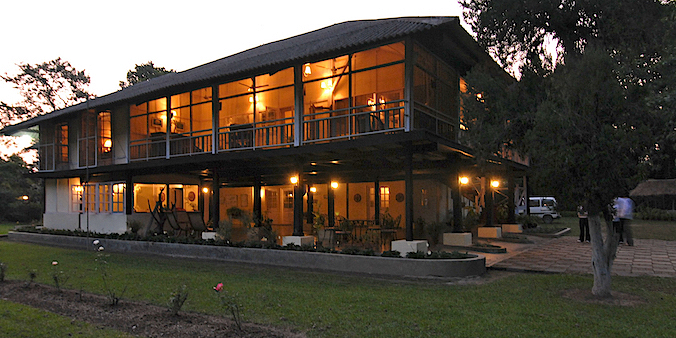
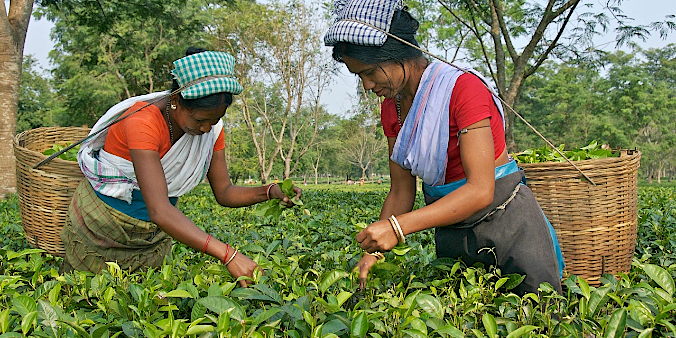
Tea Gardens of Assam
Brahmaputra CROSSING
The Brahmaputra is the boon and bane of Assam. It originates near holy Mt. Kailash in Southwest Tibet, then travels 1250km east along the Himalayan Range until it finally finds a gorge that provides a passage through the mountains to the south. Emerging on the eastern tip of the Assamese plains, it spreads its waters wide and far. Uninhibited by any civil engineering, it wildly braids, forming new channel and islands while abandoning others all the time. It brings water to the rice fields and fish to the nets, but commercial shipping has never taken off. Because being so wide and slow flowing, the Brahmaputra is very shallow. Wild elephants cross it regularly. Local ferries and tourist cruise boats are equipped with flat bottoms – to prevent capsizing – and often side propellers for getting unstuck as well.
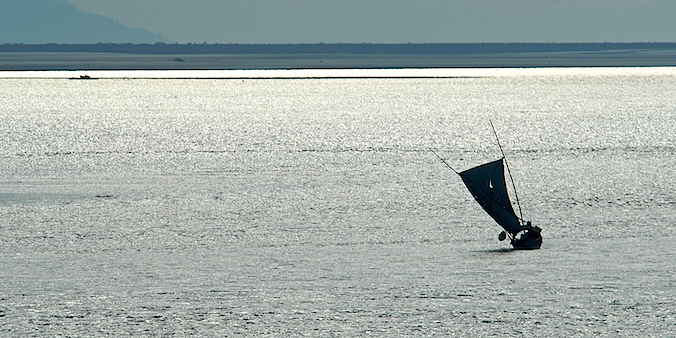
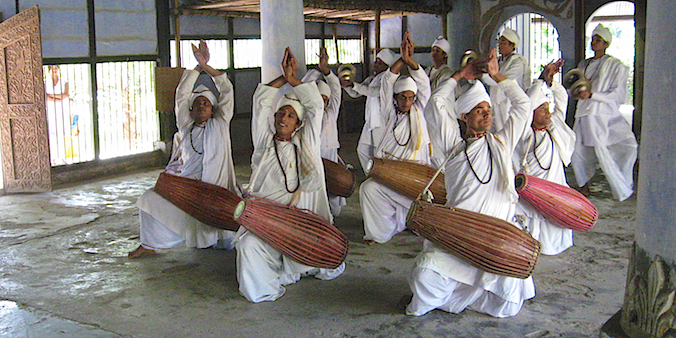
Satras of Majuli island
Majuli Island is best nown for its satras. These are monasteries where Hindu monks live who adhere to Vaishnavism, a sect founded by Sankar Dev in the 15th and 16th centuries. As Hindu priests and ascetics rarely if ever live together, this is a phenomenon in itself. The monks live in kibbutz-like monasteries where they work, pray and dance together. The dances are enactments of the ancient Hindu scriptures, choreographed by Sankar Dev. They are very graceful and esoteric, and have also been declared a Unesco World Heritage.
The Adis of Eastern Arunachal


The Mithun
Mechuka
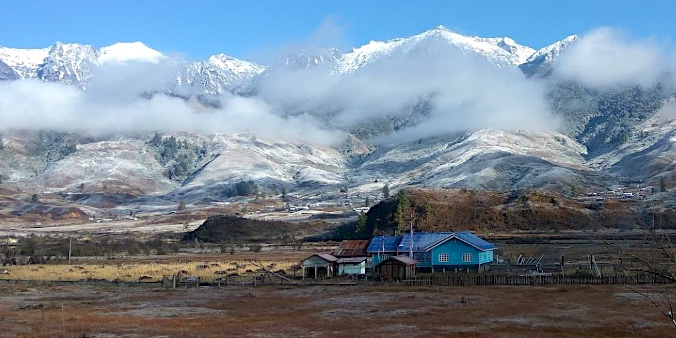
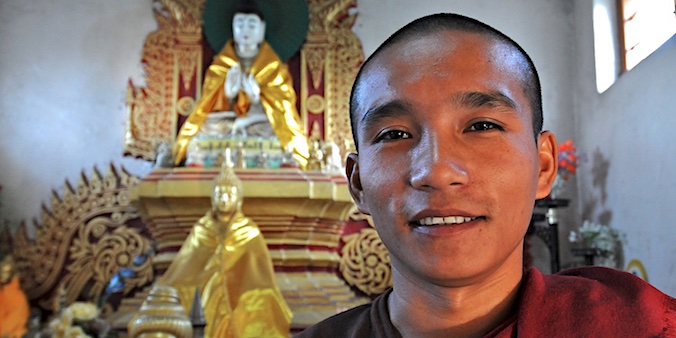
Birmese villages of Eastern Arunachal
P.M.
Roing
P.M.

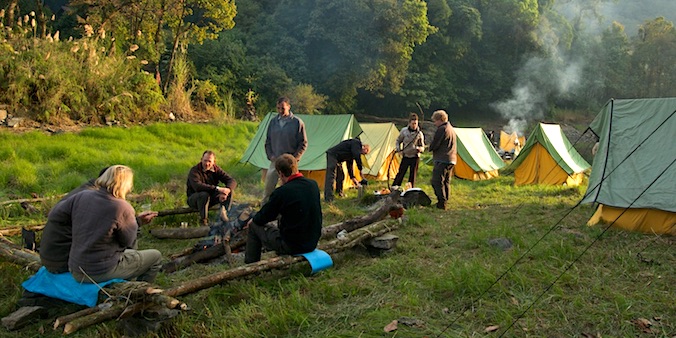
Mehao Wildlife Sanctuary
Namdapha National Park
